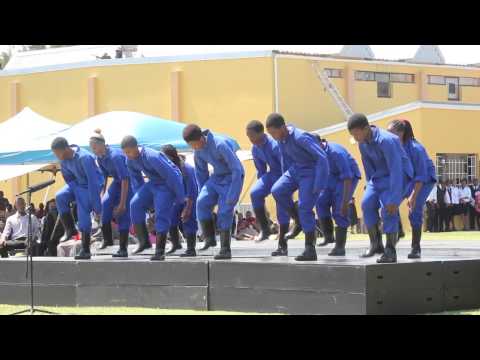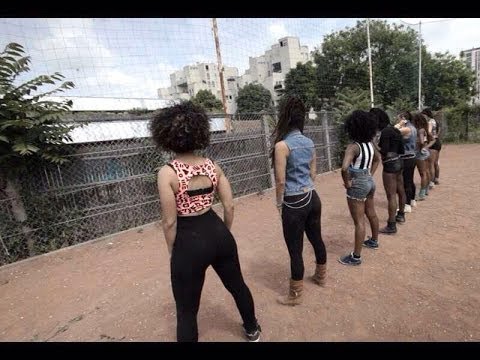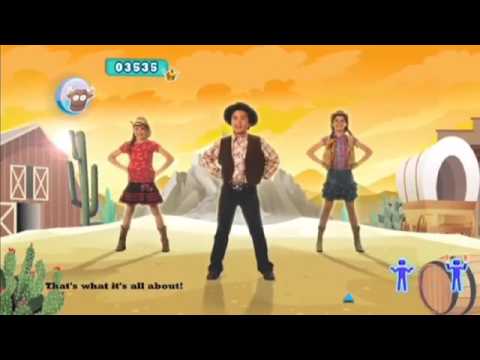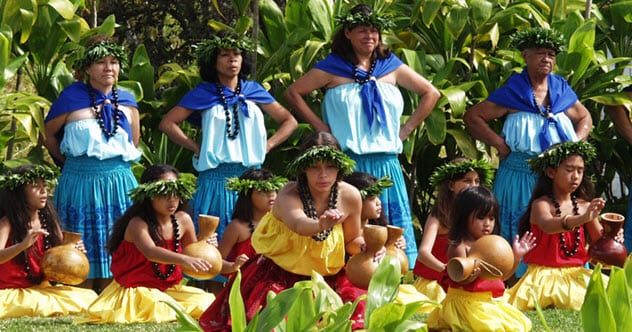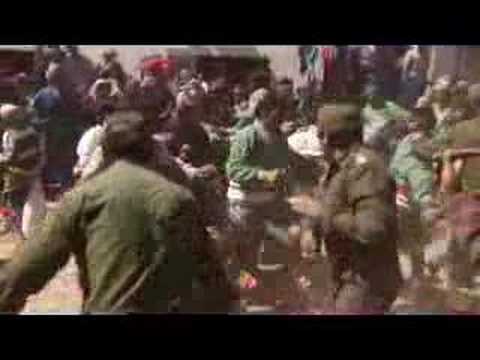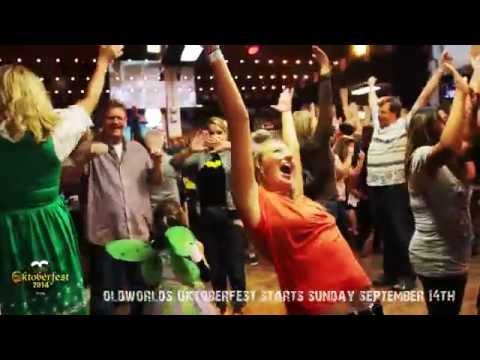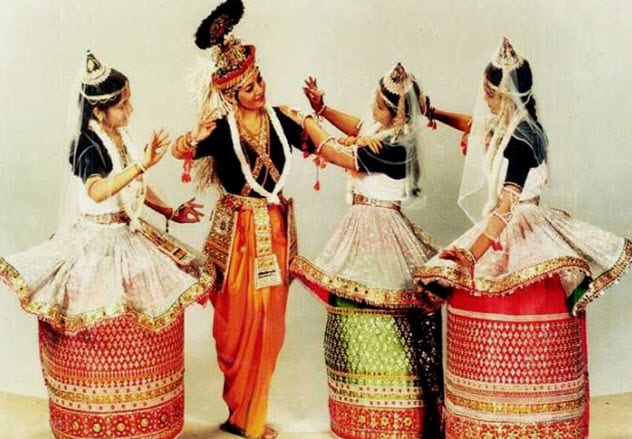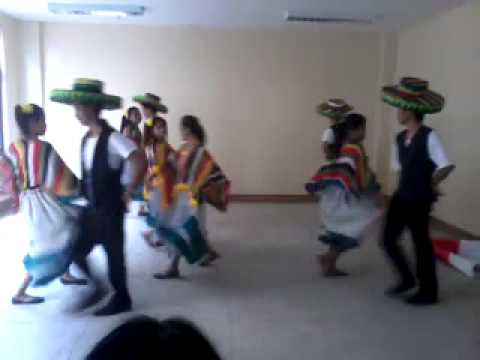Dance was a way to escape oppression or to express oneself when society silenced you. And even when a dance is just fun and games, some people still find a way to twist it into something it was never meant to be.
10 Gumboot Dancing
During the apartheid period of South Africa’s history when racial segregation laws were instituted purely to keep whites in power, black mine workers were forced to toil in dangerous conditions. Aside from many mines forbidding their workers from even speaking to each other, the white mine owners deemed it cost-inefficient to deal with the mines’ flooding problems. Instead, they gave their workers gumboots (rubber boots) to avoid health problems that would prevent them from working. Not being able to speak was an impediment to work, and the employees quickly devised a Morse code style system to communicate by slapping their boots with their hands to send messages. It seemed to have been catchy because the workers eventually developed this system of slapping their gumboots into a style of dance. The miners came from diverse parts of Africa to work, so a variety of cultures added to the creation of gumboot dancing. Tribal costumes were outlawed during that dark time in South Africa’s history, but the movements of the traditional dances were incorporated into a style that flourished into a new kind of dance.[1] Dancing was not under the rules that mine operators controlled. As a result, songs were also incorporated into the style as it developed into the whole body dance that it is today.
9 The Dance Of Death?
The dutty wine is a dance started in Jamaica that involves wild gyrations of the neck. The dance is so intense that some Jamaican doctors are cautioning would-be dutty winers not to perform it. Physicians say that the dance, particularly the neck twirling, causes too much stress on the spine and can harm to the dancer. Some doctors say that the dance may be performed without issue with appropriate training, but others maintain that the movements are dangerous no matter how much physical preparation the dancer has done. They warn that the dance places too much strain on the neck and spine to walk away without injury. Nevertheless, the dance grew in popularity when Jamaican DJ Tony Matterhorn created a song of the same name. The dance spread beyond Jamaica and eventually overseas, where Beyonce also used it in one of her videos.[2] This happened despite rumors that the dutty wine was the cause of one 18-year-old’s death. Allegedly, she was doing the dutty wine when she died in a dance house. However, it is unclear if the dance itself was responsible for her death or if the blame lay elsewhere.
8 The Hokey Pokey
200 Years Old And Hotly Contested
It is odd that “The Hokey Pokey” (aka “The Hokey Cokey”) would be anything but a simple, fun song that everyone knows, enjoys, and does a little dance to. But it actually has a long, complicated, and contested history. One of the earliest versions of the song was the “Hinkumbooby,” a Scottish folk song mentioned in the 1826 Popular Rhymes of Scotland. This variation was similar to the modern song, and other versions were likewise created throughout the years. Some people even claim that “The Hokey Pokey” was not fun and games at all but a mockery of Catholic mass. They say that the name actually came from “hocus pocus.” But it was only when songwriters in the UK and the US claimed it as their own that things really got heated. On the eastern side of the Atlantic, a legal battle erupted after two men each claimed that they had written a song called “The Hokey Cokey.” Both said that they originally called it “The Hokey Pokey” but changed the name when a Canadian soldier suggested that the word “cokey” would be better than “pokey” because it was Canadian slang for “crazy.”[3] The legal battle was settled out of court. Similarly, another lawsuit ensued in the United States between two different groups claiming to have written “The Hokey Pokey.” This battle apparently ended with the royalties being shared.
7 The Hula Is A Story
While movies often depict hula in a stereotypical way, grass skirts, coconut bras, and swaying hips do not capture what hula truly is. Ancient hula was accompanied by chanted poetry, and each gesture of the dance held deep meaning. It was the sacred text of the Hawaiian people written in movement, a traditional method of passing legends and shared histories down from generation to generation. Hula is a story. Hula was banned by the missionaries who landed on the island in the 1800s. They considered it a pagan practice and condemned it. Soon, hula and native Hawaiian culture in general was slowly dying away until a cultural explosion in the 1970s revived the traditional dance. There are now two types of hula. Hula kahiko hearkens back to the traditional methods, using percussion instruments and chants that tell stories of the old ways and gods. Hula ‘auana is the kind more familiar to contemporary culture, with the graceful movements performed to more modern instruments.[4] Regardless of which style is performed—and there are many subdivisions—hula was never intended to be a simple dance. It is a spiritual exercise of telling the story of one’s heart, which is perhaps why it now has so many practitioners around the world.
6 Dance Or Brawl?
The tinku is Bolivia’s national dance. It has its origins in a tradition where different communities would gather in a designated area to release tensions by beginning a dance that erupted into a ritualized brawl. The tinku involved forming circles of dances separated by gender. It began at a fast pace, transitioned into a stomp, and finally transformed into ritualized combat. Any blood spilled was seen as an offering to the gods for a good harvest. And any deaths, which occasionally occurred due to the nature of the festival, were likewise seen as a sacrifice. The modern-day tinku looks somewhat similar to the original practice except that the combat has (ideally) been toned down to ritualistic combat-like movements. However, the festival where the tinku is performed usually involves heavy drinking, and tensions between communities or neighbors can still turn from dance into a brawl.[5] Tourists who visit Bolivia during the festival period have said that while the tinku was indeed a spectacle, it was not one they wish to repeat. Tensions can run high during the period for anyone, and it has been advised not to make any provocative gestures lest visitors risk getting caught up in the tinku themselves.
5 The Chicken Dance Is Not A Chicken Dance
Most people know the silly, wordless (but not always) “Chicken Dance” song popular at parties. But no one actually knows who first called it the chicken dance. Originally, it was not associated with chickens in any way. Initially called “The Duck Dance,” it was composed by Swiss accordion player Werner Thomas who performed it for patrons at his local restaurant. Spontaneous dancing erupted from those who listened, so Thomas eventually incorporated more birdlike movements and renamed it “Tchirp-Tchirp” after the sound of birds. Even though it was a hit in his town, the song languished in obscurity until a Dutch publisher took a liking to it, added words, and spread it across Europe. Even then it was not a “chicken dance.” Instead, it was called “Little Bird Dance” or “Birdie Dance.” Both in Europe and the US, the dance had a history of being thrown around until finally making it big and becoming famous after years of modest acclaim. Publisher Stanley Mills acquired the publishing rights in the US, but he only called it “Dance Little Bird” because that title sounded more commercial than “Little Bird Dance,” as it was known in Europe. Mills also added English lyrics to the song, but they never really caught on. It wasn’t until a record label called up Mills about the “Chicken Dance” that it acquired its popular name, seemingly out of thin air.[6]
4 The Sacred Dance Outlawed By The British
The female costumes of the Manipuri dance can be unique. Some are long, stiff skirts decorated with gold, silver, and mirrors that give dancers the appearance of wearing fashionable barrels. The spinning motions of the dancers can have an almost mesmerizing effect. The dance experts of the Manipuri region were known as “Gandharvas” in ancient Vedic texts. They used their dances to celebrate Hindu values and spirituality. This was why Christian missionaries actively discouraged the dance once the Manipuri region came under British colonial rule. The government soon outlawed all dancing in Hindu temples in the hopes of stopping spiritual and cultural dances like the Manipuri dance. Nevertheless, the dance survived in secret. Once the Indian freedom movement took hold, it was revived alongside many others. Although many Indian dances once again became public traditions, the Manipuri dance in particular received help when the Nobel Prize–winning author Rabindranath Tagore became entranced by it.[7] He invited a famed Manipuri dancer to join him at an Indian cultural and study center. The Manipuri dances were dance-dramas that told ancient Hindu tales, and his work helped rekindle interest in and knowledge of the old ways.
3 Physically Integrated Dance
Physically integrated dance is not what people imagine when they think of dance. It uses people with and without disabilities who share the same stage and dance to the same piece of choreography. Whereas some might imagine the dancer with a disability playing a lesser role, physically integrated dance creates a choreography where all dancers’ unique traits are expressed. There are many types of physically integrated dance, with styles ranging from traditional ballet to modern contemporary. The dances are like showcases of different body types (though not in a pitying or exploitative way). They are journeys into what each can do. The dance often poses a challenge for both the critics and audience. Critics do not want to criticize performers who are disabled, and dance troupes like The GIMP Project challenge the audience with monologues detailing what viewers may be thinking when they watch the performance.[8] The style of dance was not built to “make up for” disabilities but to use them to create new forms of dance that are not possible under normal circumstances. For example, a dancer without legs will work with another performer to create a unique type of aerial silk act. Despite this, directors of the dance companies often run into those who pity the disabled dancers and do not hold them to the same standards of others in their field.
2 “La Cucaracha” Has No Standard Lyrics
The origins of “La Cucaracha” (“The Cockroach”) is anything but clear. While most attribute it to Mexico, that is only where it gained popularity, especially with folk dancing. Some books have it dating back to the reign of Ferdinand and Isabella in Spain. Others record it being carried across the Atlantic Ocean to Mexico by Spanish Marines. The song is primarily associated with Mexico because it was used by both sides of the Mexican Revolution as propaganda (and probably just to pass the time). The lyrics of “La Cucaracha” were modified according to the values of the people who sang it. It was often heavily influenced by the events of the time period in which it was sung. This was especially true of political events.[9] The lyrics tend to focus on one person—the “cockroach” from which the song gets its name. Whoever the cockroach is determines the lyrics, which are metaphors for whatever nefarious dealings the singer/songwriter believes to be going on. With such an extensive history, the song has gone through a lot of revisions. It may be better to think of “La Cucaracha” as an oral history of displeasure with political figures (and anyone else who happens to be in charge).
1 Affranchi
The Dance That Came Full Circle
When the French colonized Haiti, they enslaved the locals and put them to work on plantations. The enslaved Haitians were banned from publicly performing European dances, but their slave masters would still have them perform their native African dances for the masters’ amusement. After the slave revolt of 1804, class barriers began to crumble and Europeans began intermarrying with women of African descent. The descendants of these common-law marriages were known as Affranchi and created a new style of Haitian dance. The Affranchi (folk dance) was named after the new class that created it. It incorporated some movements from their enslaved ancestors, but their rhythmic movements were more reserved than the dances that were once secretly performed to drumbeats of voodoo ceremonies. Although the final stage of the dance was freestyle, they wanted to retain what they saw as European poise. The Affranchi dance remained largely based on European dance structures that incorporated African elements.[10] It was a prestigious class of dancing. As it spread beyond Haiti and moved into modern times, Affranchi began to incorporate a greater range of movements. More of the original African elements were reincorporated, including voodoo drumbeats and a greater link to Haitian heritage. It became more than something emphasizing European structures. It was now a dance associated with Haiti itself. Mike lives on the East Coast and pays too much for beach parking.
